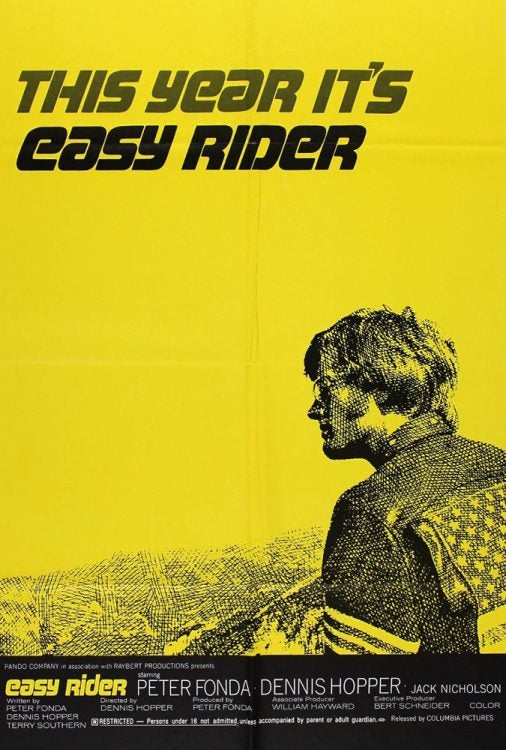Earlier this week, we told you about Europe’s wild first quarter of motorcycle sales. At the start of 2022, bikes were flying out of showrooms as quickly as buyers could get approved for loans. And then, the Russian military invaded Ukraine in late February, and sales plummeted. This problem has been less noticeable in North America, especially because the supply-demand curve is still skewed, but some industry insiders are starting to notice the effect here as well (less so than Europe, I believe).
Around the same time as that Russian invasion, everyone seemed to finally start noticing inflation, probably because the price of gas went sky-high and could no longer be ignored.
To be clear, fuel costs have been steadily climbing ever since petrol pricing hit the basement at the start of COVID-19. However, here in Canada, nobody could pretend it wasn’t a problem any longer when some gas stations started charging $2 a liter. Americans and Europeans have seen similar rising fuel prices, which led inmate @ScottFree to comment, in that Euro sales article:
Interesting that rising fuel prices (and perhaps reduced availability) are being cited as a reason for a slumping motorcycle market. I’m old enough to remember when high prices and short supply were the reason a lot of people bought motorcycles in the first place.
That’s correct. If you know your North American moto history, you know motorcycles sold well through the embargo crisis of the 1970s. So what’s up now? We get this reply from @The_Precious_Juice:
Perhaps consumers were less afraid for their safety back in the 70s. In the USA we started to become the land of cowards (not the brave) around the year 2000.
Also, perhaps MC are more seen as toys and not frugal transportation devices over the last 40 years. The performance has really really increased during this time, and with deaths due to speed.
Also, the younger crowd (who has less savings) are more interested purchasing something more expensive (battery powered transportation) than a Honda NAVI, which starts at $1,800 and has a top speed of 50mph, and would get maybe 95mpg at 35mph speeds, basically what it is designed for.
It’s worth addressing both of these comments, because they tell us why the motorcycle industry had basically flatlined in the years leading up to COVID, with no significant growth—and why we may be headed back there. I blame this on four factors.

Back in the 1970s, motorcycles were more fuel-efficient than cars, and cheaper to buy. That difference between two wheels and four is less noticeable today, as cars have better fuel economy. Search through vintage adverts, like this one from Kawasaki, and you’ll see lots of references to saving money. I just don’t see that emphasis in marketing anymore.
It looks like the 1970s, but it isn’t!
At first glance, market conditions right now might look like the 1970s, but things are much different. The 1970s were infamous for high fuel prices and stagflation, but at that point, motorcycles were also a much more fuel-efficient option than cars. Your made-in-Lincoln-Nebraska Kawasaki KZ400 got 60 mpg, and your 1971 Chrysler New Yorker got 12 mpg. These days, those numbers would be much closer, and bikes have less of an edge.
People had more money in the 1970s, too. Sort of. Whether your economic sympathies lie with the Austrian school, the Chicago school or the Keynesians, or you just keep rolled-up twenties in a mattress, one thing’s undeniable: People have more debt in the 2020s than they did in the 1970s, and the purchasing power of their dollar has greatly diminished, along with real wages. It’s easy to look around and see a lot of prosperity in the western world. But, you don’t have to look too far behind that facade to notice millions of formerly middle-class people aren’t doing so well, and even the people who are economically secure are spending a lot of money just servicing their debt. Easy credit does help push a lot of bikes out of showrooms, but it also makes it easier to buy other things instead of motorcycles (more on that in a minute).

Easy Rider came out in 1969, just before the ’70s started, and audiences dug the groovy do-as-thou-wilt message. Does the motorcycling scene have the same inspiring counterculture message today? I don’t think so. Corporations have no appetite for risk, and they’re shaping our society to eliminate it. When was the last time you saw a studio poster promoting a film that emphasized doing what you want, without worrying about working for The Man?
Society wants to be safe, not free—and this means fees
Are Americans, and the rest of the developed world with them, the land of cowards, as @The_Precious_Juice says in the comments? I really don’t know how to address that comment, but I will say this: I’m not sure if the general population has less, more or the same level of bravery as it did in the 1970s, but I can certainly say that corporations have far, far less tolerance for risk, and that has certainly driven up the cost of motorcycling. It might have been more dangerous, but it was certainly much easier and cheaper to get a motorcycle license and insurance in the 1970s, and people didn’t worry as much about ATGATT, which is an up-front cost that some new riders have a hard time swallowing. Fees by government (the biggest business of all!) and insurers make motorcycles seem like an impractical choice for many motorists.
My wife’s kid brother is a good example. In his first year of ownership, he paid ~$750 CAD to insure his Yamaha XT250, perhaps the most anemic street-legal motorcycle on the market at that time. That’s a lot of burger-flipping for a high school/college student working part time, and that’s only after he paid $500 for his rider safety course and $5,499 MSRP plus destination fee plus PDI plus a raft of government sales tax. Honestly, I can’t believe he went through with it, and there’s a reason his older brother (in his mid-20s) has sold his KLR and gone into dirt bikes: He couldn’t justify the ongoing insurance and fees required to keep his dual sport on the road. His best friend, also in his mid-20s, is contemplating the same.

This iPhone 12 costs $949 in Canada before taxes, not to mention your monthly service charges and data bill, etc. I’ve spent far less on motorcycles. This is just one of many consumer products that compete with motorcycles for buyers’ attention, but it is probably the most significant. Photo: Apple
Motorcycles are now viewed as expensive toys—and there are many such toys to choose from
Moving through the rest of the comment from @The_Precious_Juice: I don’t agree that motorcycles’ increased performance has scared buyers away, or even insurers, not exactly. I believe improved tires, ABS and other safety features more than compensate for increased horsepower. However, these improvements can also drive the price of bikes up, at least at first, and that probably hasn’t helped.
I believe this part of the comment gets to the heart of the matter: “…perhaps MC are more seen as toys and not frugal transportation devices over the last 40 years … Also, the younger crowd (who has less savings) are more interested purchasing something more expensive (battery powered transportation) than a Honda NAVI, which starts at $1,800 and has a top speed of 50mph, and would get maybe 95mpg at 35mph speeds, basically what it is designed for.”
Know when motorcycle sales hit the skids, bad? In 2008. Everyone blames it on The Great Recession, and that’s probably the right answer. But, you know what else happened in 2008? Steve Jobs brought out the iPhone. No other device has transformed our current world so completely and quickly.
In the 1970s, if you wanted to hang out with your friends, meet girls (or boys), buy groceries, go to a restaurant, whatever—you needed a vehicle. Now, you need an app. And with that change in society, we’ve also seen a change in attitude towards battery-based vehicles. Despite the rarely-discussed pollution of EVs, they are still viewed as a cleaner, nicer option than a smelly gasoline-powered motorcycle. An expensive ebike is hip, green, and easy to live with in, even in the heart of the city. Not so with a motorcycle.
Another change the iPhone brought into our society: Mobile phones are a massive expense. Some people buy cheap phones with cheap data plans, other people buy expensive phones with expensive data plans, but that’s all money that could have been used on motorcycles otherwise. I’ve purchased motorcycles for less than the cost of a new iPhone, and that $1,000-or-less range was often the entry point for a cheap bike. Now, used bikes are more expensive and a mobile phone offers young people endless dopamine hits with no perceived risk. No wonder bike sales have never recovered to pre-’08 levels.
And, cellphones are just one item in today’s consumer electronics world. You’ve got tablets, video game consoles, gaming PCs, and so on. None of this was available in the 1970s, competing for consumer dollars.
Motorcycles just aren’t available
One last, stupidly obvious point: In some regions, especially those with smaller dealerships, motorcycles just aren’t available, due to supply chain issues. Even if there is demand, which there certainly is in lots of North America, dealers can’t sell bikes they don’t have. Even if some machines are available, buyers won’t purchase bikes they don’t want. I see this at my local dealers. They have Suzuki DR650s in stock (or at least, they did for a while), but if you want a Yamaha Tenere 700, better get on a waiting list. More-desirable motorcycles are still hard to find in areas with strong demand, and that suppresses sales in areas that might otherwise do well.
How can we change these issues?
That’s the big question, innit? Before COVID hit, the motorcycle industry was very concerned, hosting summit-style meetings to brainstorm answers. COVID-19 sort of rebooted the motorcycle industry by creating huge demand for new and used bikes, but if that trails off in coming months, the industry will be back in the mid-2010s doldrums. So, I want to hear in the comments: Do you agree with the problems I’ve laid out above, and if so, how would you go about fixing them?







